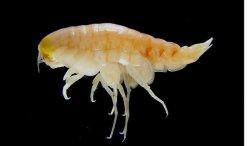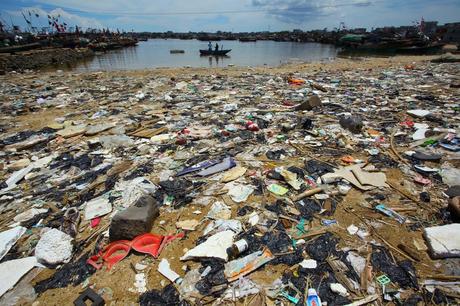GR: We can reverse some of our environmental impacts by removing toxic waste and restoring native species. However, some of the things we’ve done seem irreversible. Here’s a report on deep-ocean pollution that, like climate change, is another of the marks of our presence that will persist long after we’re gone. The subtitle sums it up: “There’s literally no escaping mankind’s mess.”

Alan Jamieson/Newcastle University Hirondellea gigas are voracious scavengers that consume anything that comes down from the surface.
“Not even the very deepest, darkest depths of Earth’s oceans can escape mankind’s legacy of toxic pollution.
“In a shocking discovery highlighting the interconnectedness of our planet, scientists have detected “extremely high levels” of organic chemicals in the fatty tissue of amphipods, a type of crustacean, living in Mariana trench ― the deepest part of the world’s oceans.

Garbage in the Pacific Ocean (Huffington Post).
“We still think of the deep ocean as being this remote and pristine realm, safe from human impact, but our research shows that, sadly, this could not be further from the truth,” study author Alan Jamieson, a marine ecologist at Newcastle University in Britain, said in a statement.” –Chris D’Angelo (More: ‘Extremely High Levels’ Of Toxic Pollutants Found In Deepest Parts Of World’s Oceans | The Huffington Post.)

